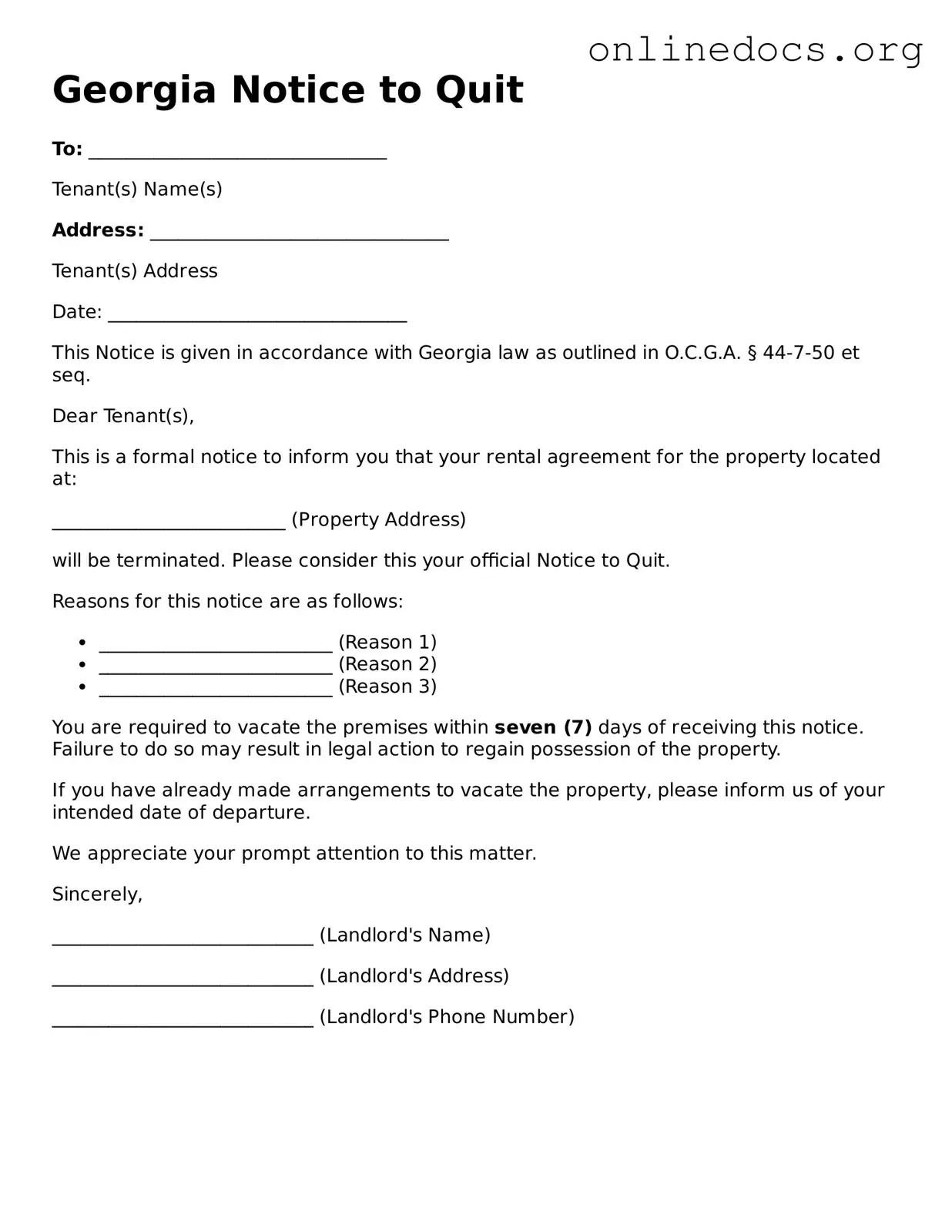The Georgia Notice to Quit form shares similarities with the Eviction Notice, which is a document used by landlords to inform tenants of their intent to terminate a lease agreement. Both documents serve as formal notifications to tenants, outlining the need to vacate the premises. The Eviction Notice typically includes specific reasons for the termination, such as non-payment of rent or lease violations, and may also specify a timeline for the tenant to vacate. While the Notice to Quit is a broader term that can be used in various contexts, the Eviction Notice is more focused on legal proceedings related to eviction actions.
Another document comparable to the Georgia Notice to Quit is the Lease Termination Letter. This letter is often used by either party to formally end a rental agreement. Similar to the Notice to Quit, the Lease Termination Letter communicates the intention to terminate the lease. However, it may be issued by either the landlord or the tenant, depending on the situation. The Lease Termination Letter often includes details such as the effective date of termination and any conditions that must be met before vacating the property.
The Demand for Rent is also similar to the Georgia Notice to Quit. This document is specifically used when a tenant has failed to pay rent. Like the Notice to Quit, it serves as a formal request for action, urging the tenant to either pay the overdue rent or vacate the premises. The Demand for Rent typically specifies the amount owed and may include a deadline for payment, creating a sense of urgency for the tenant to respond.
In the context of rental agreements, understanding the variety of notices that can be issued is essential for both landlords and tenants. For those interested in the legalities of lease agreements in New York, a comprehensive resource can be found at legalformspdf.com, which offers various lease agreement forms to ensure clarity and compliance with state laws.
The Notice of Default is another document that bears similarities to the Georgia Notice to Quit. This notice is often used in situations involving mortgage agreements but can also apply to rental agreements. It informs the tenant of their failure to comply with specific terms of the lease, such as timely payment of rent. The Notice of Default outlines the necessary steps the tenant must take to rectify the situation, much like the Notice to Quit, which prompts the tenant to take action to avoid further legal consequences.
The Termination of Tenancy Notice can also be compared to the Georgia Notice to Quit. This notice is typically used when a landlord wishes to end a tenancy for reasons other than non-payment, such as the expiration of a lease or the desire to reclaim the property for personal use. Both documents convey the landlord's intention to terminate the tenant's right to occupy the property. However, the Termination of Tenancy Notice may provide a more specific reason for the termination, aligning with the terms outlined in the lease agreement.
Lastly, the Conditional Quit Notice is another document that is akin to the Georgia Notice to Quit. This notice is issued when a tenant has violated specific terms of the lease, such as causing damage to the property or disturbing neighbors. It gives the tenant an opportunity to remedy the situation within a specified timeframe. If the tenant fails to comply, the Conditional Quit Notice may lead to further legal action. Like the Notice to Quit, it emphasizes the need for the tenant to take immediate action to avoid eviction.
